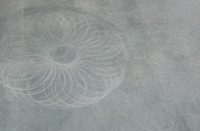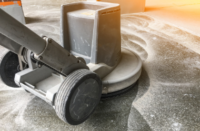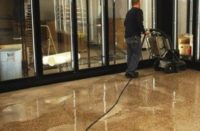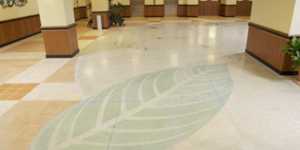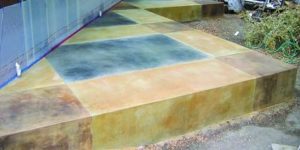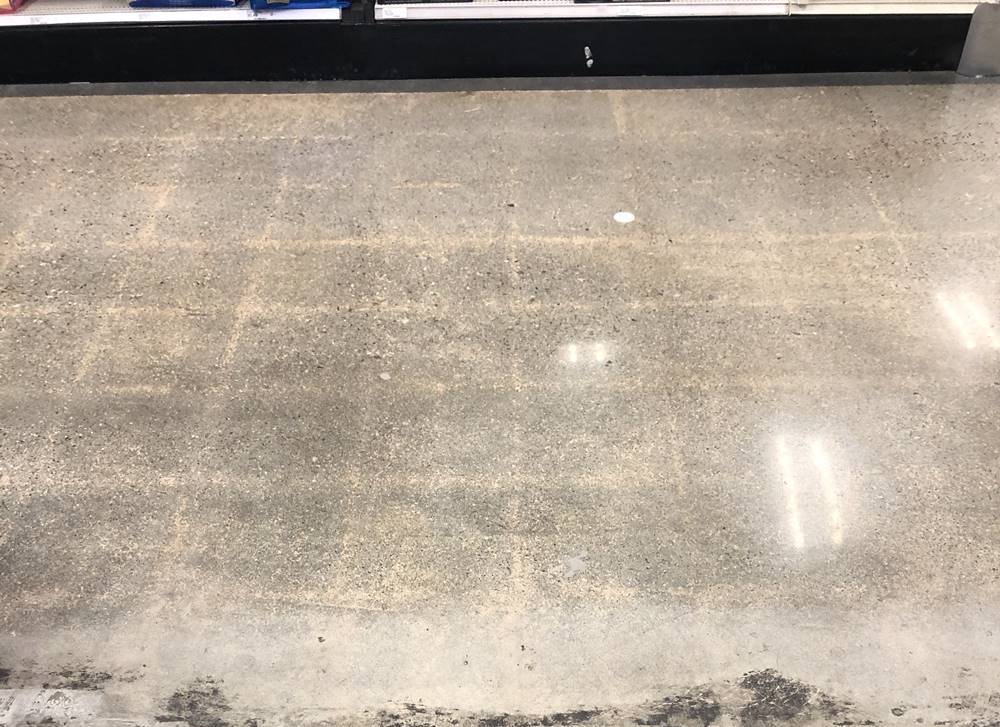
The aesthetics of polished concrete is often one of the primary reasons why it’s chosen as the finished flooring on many projects. The material’s natural beauty expressed through varying aggregate reveals, the color of the cement binder and the clarity of the polished surface makes it a singularly unique flooring choice.
While the beauty of a fully polished concrete surface isn’t debatable, the specifier must be aware of the unique challenges that come with polished concrete. When presented with an existing concrete slab, both the designer and the customer should know they may encounter some challenges.
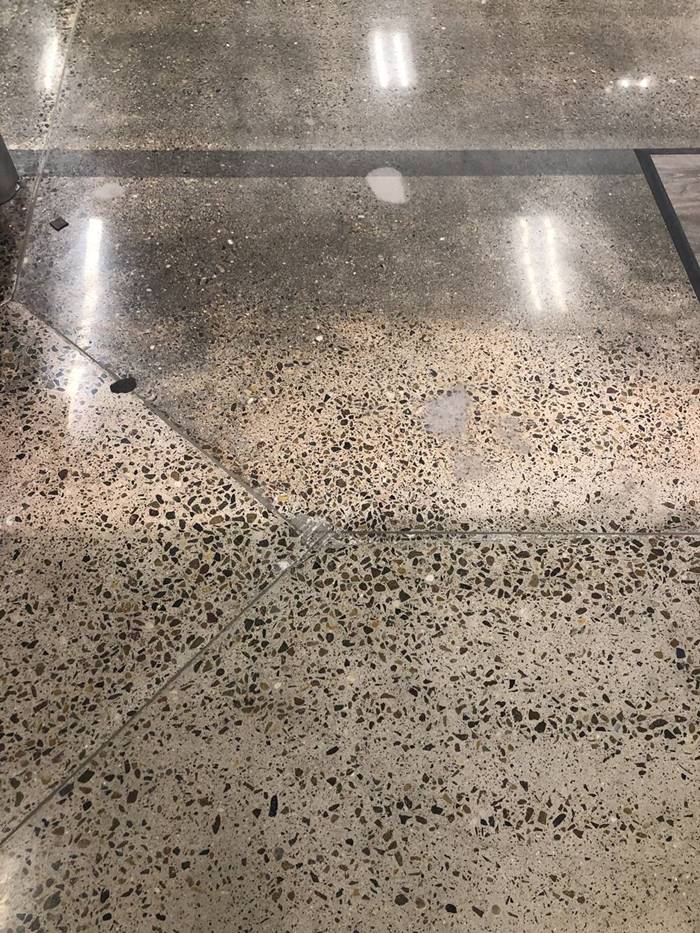
Polishing existing concrete slabs
Varying aggregate reveal
Mechanical processing will reveal varying degrees of aggregate and at different concentrations. With an existing slab, the cement fines and fine and coarse aggregate may commonly appear within the installation.
Additionally, areas of high aggregate reveal will accompany areas with little to no reveal, many times in an adjacent area. You should expect and appreciated this unique aesthetic. Both the specifier and the customer must understand that polished concrete is not terrazzo!
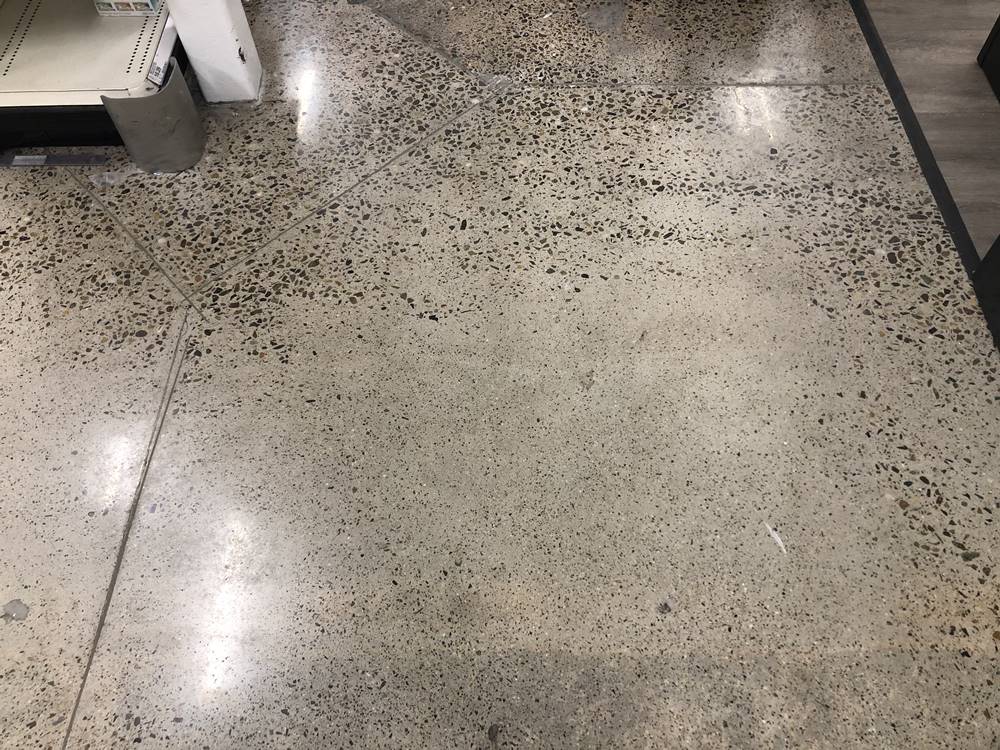
Surface imperfections
With existing slabs, the areas where there were trenches, spalls, patches and repairs made using a cementitious material will typically appear more pronounced in the final polished product.
You can’t process out repaired areas via grinding. Simply consider them part of the final aesthetic.
Ghosting
Polishing concrete after removing modular floor coverings will result in ghosting. Ghosting results when dirt and debris migrate over time into the concrete at the modular product’s seams.
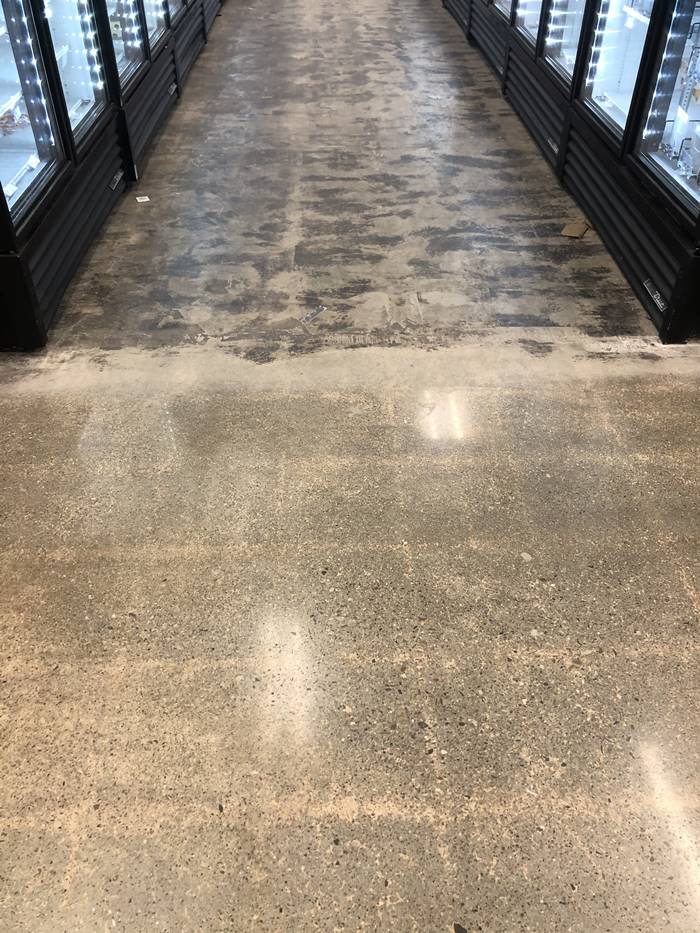
When you polish the concrete, the grid pattern will appear in the polished surface. Aggressive grinding won’t reduce this effect and, in many cases, makes the grid lines appear more pronounced.
Slab curl
Slab curl occurs as a result of moisture and temperature gradients in the slab during curing and drying that forms warped edges. When processed, warped edges often will show a deeper aggregate reveal than the center of the slab as you remove more material from those areas.
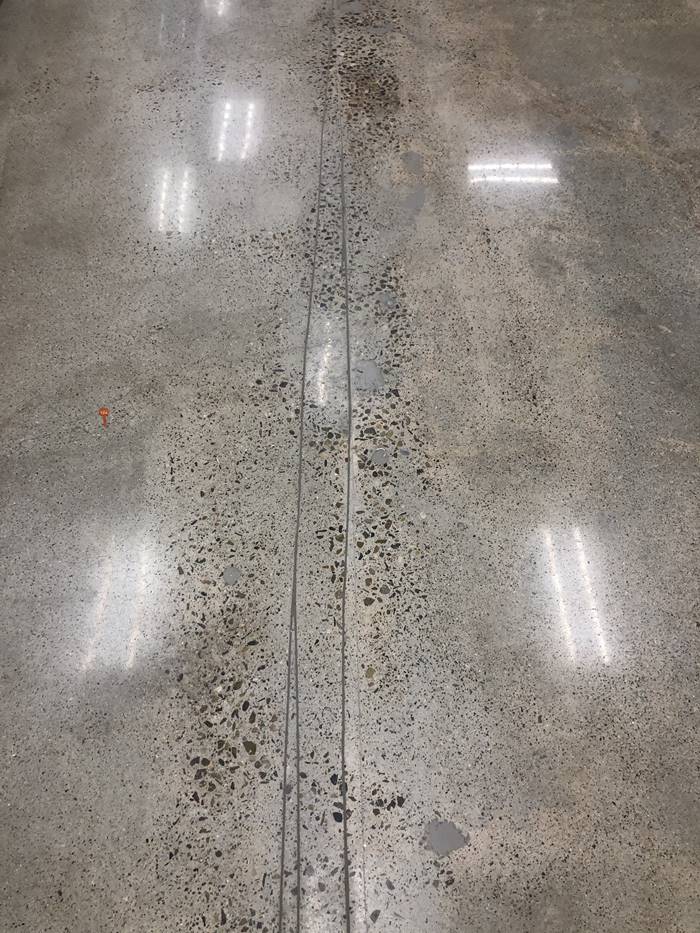
Mechanical processing will reveal varying degrees of aggregate concentration.
The presence of slab curl can make it challenging to achieve uniform aggregate reveal. This must be considered when a specific aggregate exposure is desired.
Cracks
You must repair dormant or nonmoving cracks in existing concrete from both a serviceability and safety perspective, as well as to improve the final aesthetic. As with the other surface imperfections listed, you can’t process out repaired cracks. They will be apparent in the polished surface.
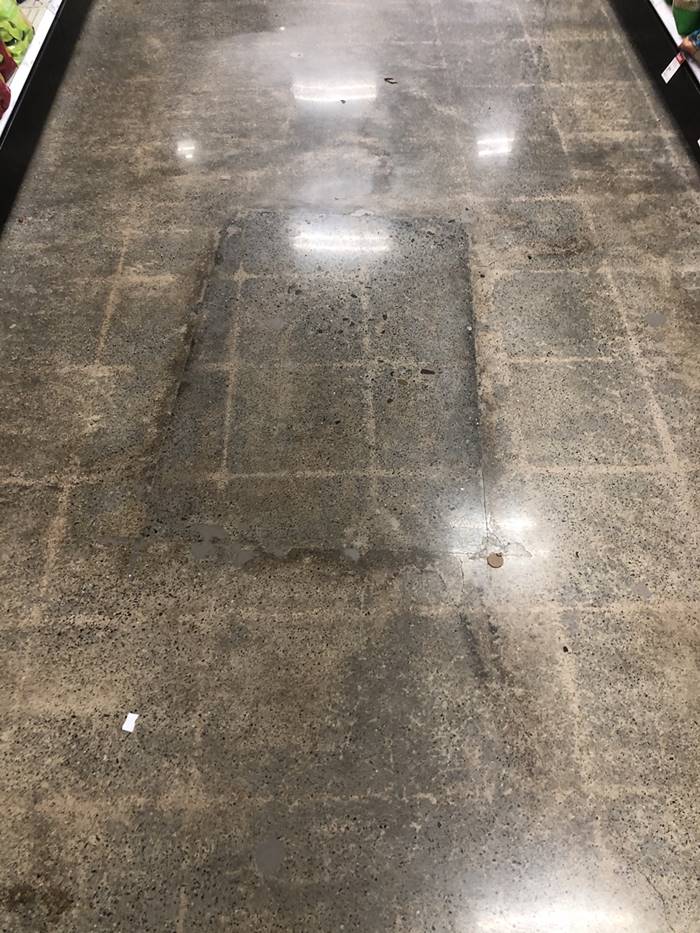
Mock-up expectations
It’s critical to set expectations for the finished surface. This is typically achieved with a 10-by-10-foot mock-up on the slab that will be polished.
But let me forewarn you. While the mock-up can provide an estimation of the finished surface, it shouldn’t be used as a measuring stick to evaluate the entire area to be processed. In areas beyond the mock-up, the installer may have used a different batch material. Also different crews could have finished the areas on different days using different finishing techniques.
These differences naturally affect how the concrete polishes. Consequently, it may dramatically differ from the mock-up. If the clients expect you to reproduce the mock-up over the entire area, they may reject the floor if it fails that test.
Specifying polishable overlays
The aesthetic created by each of the considerations noted earlier may be entirely acceptable to your customer. With polishing an existing concrete slab, beauty often is in the eye of the beholder.
Customers often see ghosting, patchwork, trenching and spalls as “industrial chic.” In addition, these attributes may fit the larger aesthetic the designer seeks to capture for the space. If all parties accept the challenges associated with polishing the existing slab — to include a degree of uncertainty regarding the final product — then the process can move forward.
If the customer isn’t willing to accept those considerations, using a polishable overlay is one solution. Polishable overlays remove those variables detailed above. Subsequently, they provide a reproducible outcome through the following equation: Product Control + Process Control = Predictable Results.
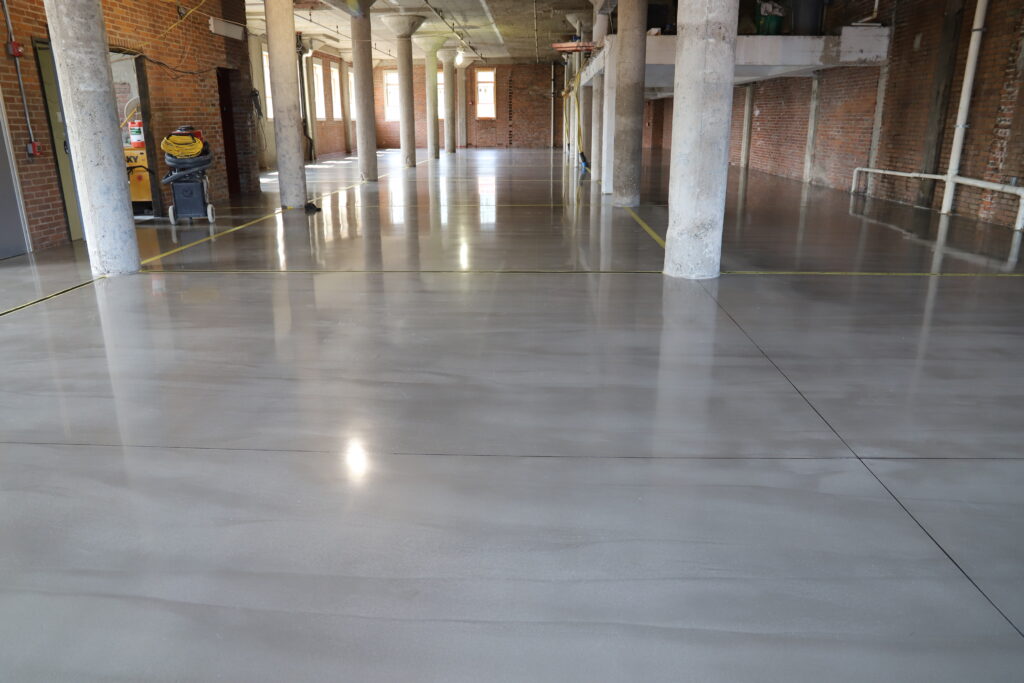
The advantages of overlays
In other words, using a polishable overlay allows you to control everything from mixing and placing the material to processing and protecting it. This results in a finished reproducible surface. It leaves little unknown regarding the final aesthetic.
A polished overlay will still absolutely require a mock-up, but the mock-up will fairly reflect how the overall installation will appear. When poured and processed correctly, polishable overlays can achieve a cement fines reveal (CPC Aggregate Exposure – Class A) up to a coarse aggregate reveal (Class C).
Polishable overlays can also receive a full polish (1,500 – 3,000 grit polish and guard). You can also process them as a grind and seal.
While polishable overlays and polished concrete are within the same family of flooring surfaces, overlays create an aesthetic different from polished concrete. Polished concrete is truly unique given that every slab will process differently. Every slab is different from the next and will yield a different result. On the other hand, you can reproduce overlays over and over again much more easily.
This doesn’t mean to imply that a polished overlay can’t create a unique look — quite the contrary. Ultimately, overlays provide the designer considerably more design options. Creating a signature project by including aggregates, integral color, topical staining, terrazzo strips and similar elements allow designers and customers to create with a fresh palette. With polishing an existing slab, the designer has limitations in what that concrete presents.
Whether polishing existing concrete or installing a polished overlay, you can achieve the same end effect. That being a unique, naturally beautiful, low-maintenance floor surface that’s environmentally friendly and sustainable.
